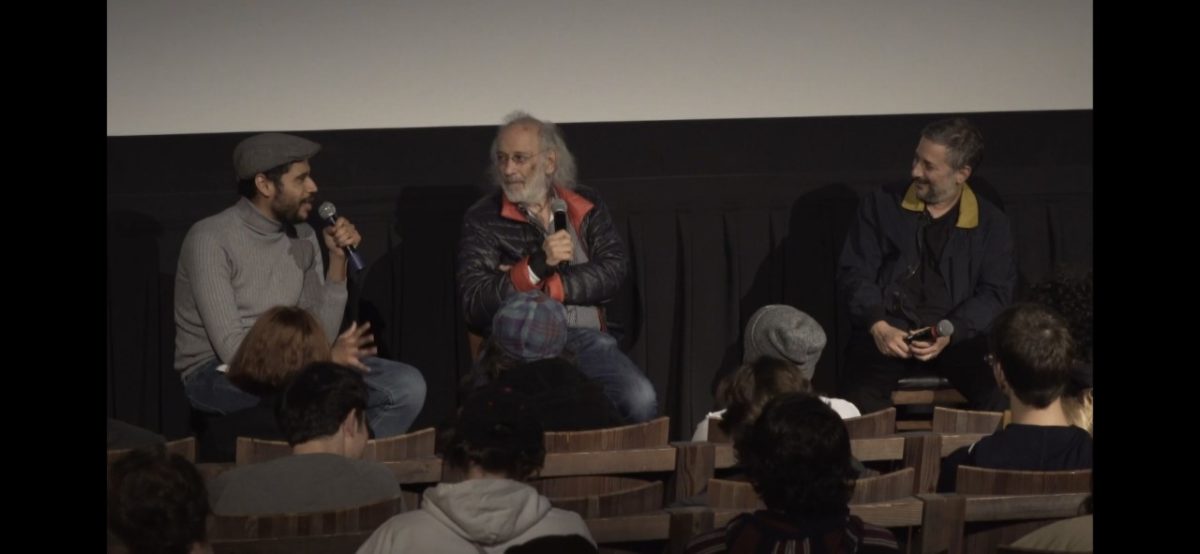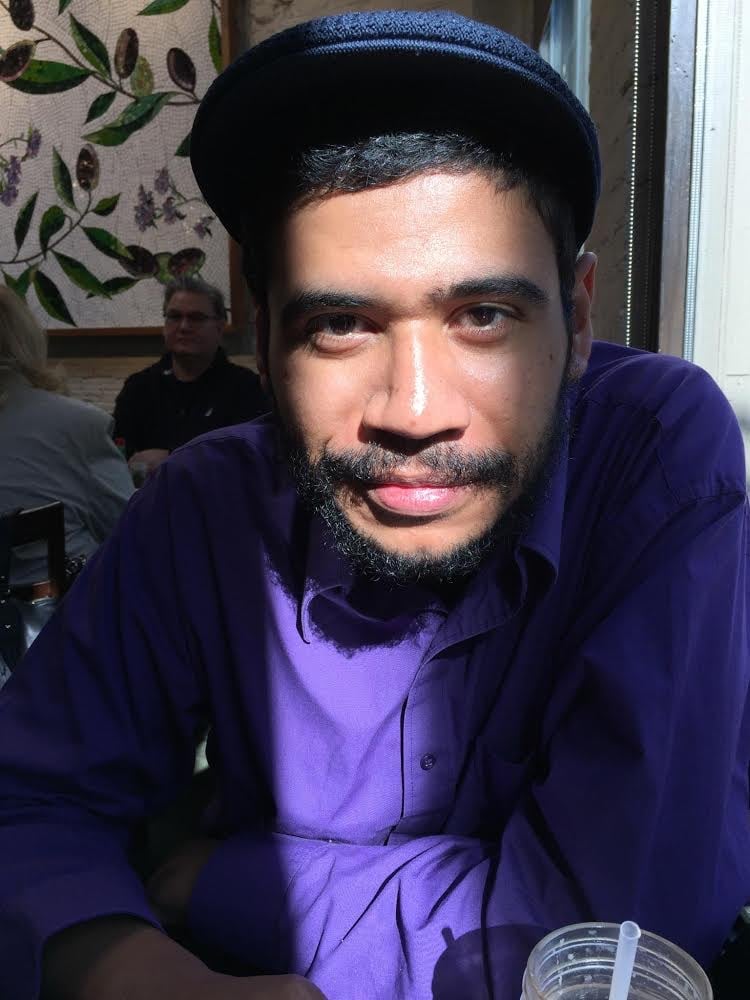Carlos Valladares ’18 is a writer and critic from South Central Los Angeles, Calif. He studied film at Stanford University and began his PhD in History of Art and Film & Media Studies at Yale University in fall 2019. He has written for the San Francisco Chronicle, n+1, Film Comment and the Criterion Collection. He hopes to write and direct his debut feature in the next few years, based on stories by Henry James, Clarice Lispector and his own childhood.
The Stanford Daily interviewed Valladares about how Stanford nurtured his passion for film and his insights on criticism and the film industry.
The Stanford Daily [TSD]: What activities and opportunities at Stanford influenced your growth as a scholar, critic and consumer of art?
Carlos Valladares [CV]: The first one was the access that students have to Green Library — especially the Media & Microtext Center, which was like my church. During my four years at Stanford, I would go there and watch any random movie, from the most popular ones like “Blade Runner 2049” to the most obscure, like a Vincente Minnelli musical from the early 1950s. That was a lot of my education, honestly: watching films that my professors had recommended, or something one of my friends had told me about.
The second thing was the Stanford Theatre. It’s this great movie house — one of the bright spots of University Avenue in Palo Alto, and one of the few movie theaters that show classic films in the format they were intended to be seen: 35 mm film. They would do an Alfred Hitchcock season, or a program of Val Lewton horror films, or screwball comedies of the 30s. It was just so cheap — literally $6 each night for a double feature. It’s my favorite movie house by far. The first double bill I saw there was Alfred Hitchcock’s “Notorious” and then Howard Hawks’s “Only Angels Have Wings.” That blew my mind, seeing it on the balcony: I was like, “Oh, my God, I’ve never seen an old movie like this before.”
TSD: When did you start to become interested in film?
CV: What got me started was going to the library when I was in seventh or eighth grade. I would see DVDs at the library, and if they had a little “C” on the edge, I would watch it because that meant it was part of the Criterion Collection, which is an important series of classic and contemporary films. So I saw a bunch of arthouse films as a precocious youngster. I remember watching “The Godfather” when I was 12 and thinking for the first time, “Oh, movies can be art. This is an artistic medium. It’s not just like any random Marvel BS.” It was an interest of mine, but it wasn’t as big as books or music. I think my cinephilia definitely flourished when I was at Stanford. Criterion was also a big gateway for me. Now I occasionally write for them, so it’s coming full circle.
TSD: In the last few years, Martin Scorsese has been increasingly speaking out against Marvel and franchise movies, stirring up debates in the movie world as he distinguishes between “audiovisual entertainment” and “cinema.” What do you think about Scorsese’s critique and the state of the movie industry today?
CV: I think he’s completely right. People misunderstood his entire point — they perceived him as elitist. I trust Scorsese over the screaming crowds on Twitter. I trust the guy who put his entire life into the soul of what cinema can be. He wasn’t knocking people for going to Marvel movies. It was simply saying that franchise film producers are trying to shovel money into films that people have lost the willpower and the interest to see.
Martin Scorsese was thinking for the artists — he’s thinking for somebody like you or me — someone who wants to make something and say it in a personal, humanistic way. Marvel films are not humanistic. They’re a complete waste of money, which is the shining beacon of late capitalism today.
I think the movie industry is in a profound state of crisis, especially with the takeover of streaming. There are some places like A24 that are trying to present interesting original films, like “Uncut Gems” or “Lady Bird” or “Moonlight.” I appreciate the existence of a company like that.

TSD: Film aficionados love old black-and-white movies, non-English-language movies and DVDs. Most Americans would raise an eyebrow at these things. How do you feel knowing that you are part of a unique and maybe even old-fashioned bunch?
CV: One of the reasons I love film so much, probably more than any of the other arts, is because you’re always aware that these actors are speaking a completely different language than you. Non-English films allow you to stop thinking that a film is supposed to conform to your ideal vision of reality.
It’s also so dumb how some people will literally never see anything before 1990. People can’t get over “old-timey talk” of 1930s Hollywood melodramas. Or they don’t like silent movies because they’re “outdated.” If you watch a lot of silent movies, you realize just how much filmmakers today don’t do anything with dialogue. As Gloria Swanson says in “Sunset Boulevard,” “We didn’t need dialogue — we had faces.” It’s not old-fashioned; it’s just made in a different era.
TSD: As someone who has explored the depths of the film world, how do you feel about the people who have a limited understanding of the world of cinema, whether it’s by choice or by ignorance?
CV: There is, maybe, a snobbism that comes with some cinephiles because there’s a coded way of discussing films that can result in alienation for other people — but, it just takes one film to act as your gateway into the whole world.
Fortunately, the face of cinema is changing so much. Viewing habits are becoming less US-centric, less straight, white, male and cisgender. At the same time, there’s this troubling ahistoricism that’s happening, where people want images from the past to conform to their present notions of a “progressive” or “advanced” film. That’s where you get people who say, “I don’t watch films before 1980 because they were all made by straight, dead, white men.” I find this a dangerous way of approaching art — reactionary, even.
As someone who is Latino in the United States, I’m hyper-aware of all these things. I can find as much beauty and “identification” in a Vincente Minnelli melodrama — where everyone is white — as something that’s closer to home, like the LA rebellion for me, since I grew up in South Central Los Angeles. It just has to do with a shifting perspective. Juggling these conversations is important for the work that I want to do.
TSD: What advice would you give to students at Stanford who want to watch and study movies in a more meaningful way?
CV: Join Letterboxd! I found it a great site to feed my cinephilia. People should also realize that streaming doesn’t have everything, but the Criterion Channel, MUBI and Amazon Prime have a wide selection for people to watch. Go to the Stanford Theatre and go to Green Library. Fountain hopping will always be there, but cinema can’t wait.
This interview has been condensed and lightly edited for clarity.
